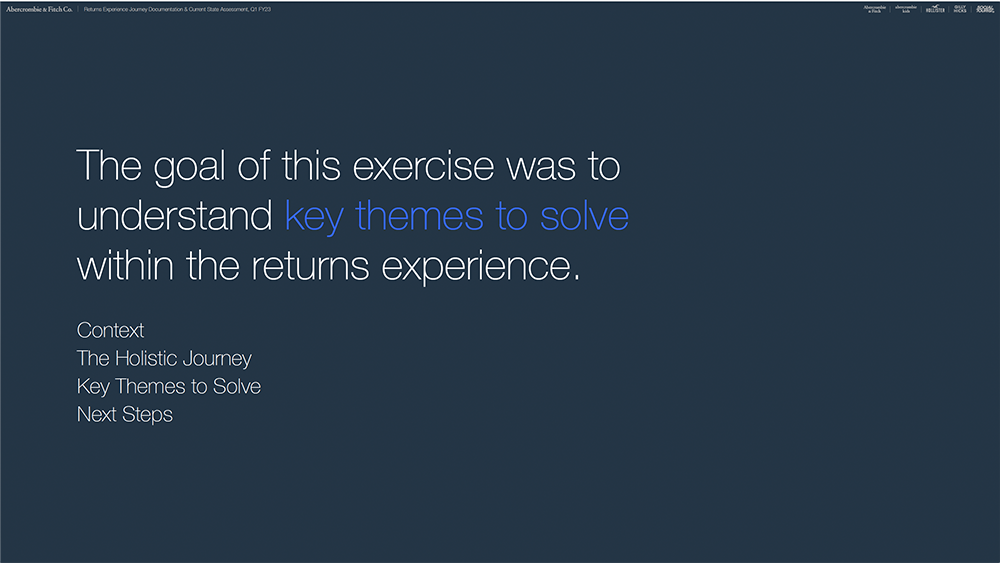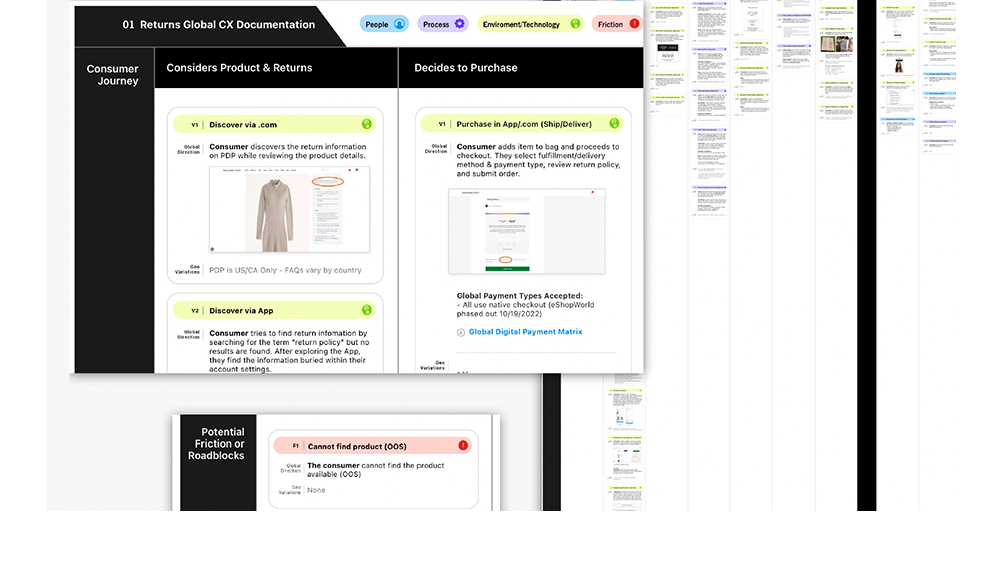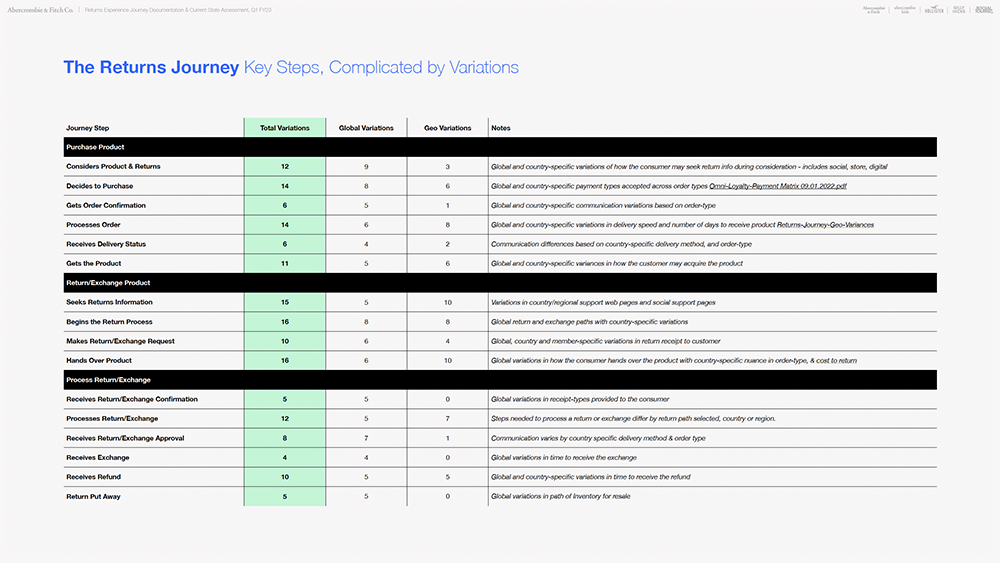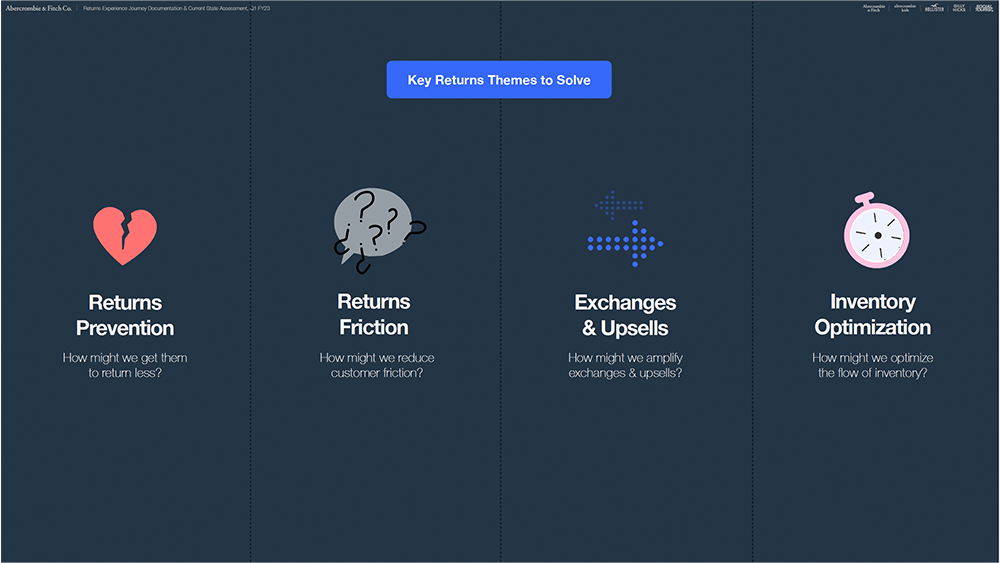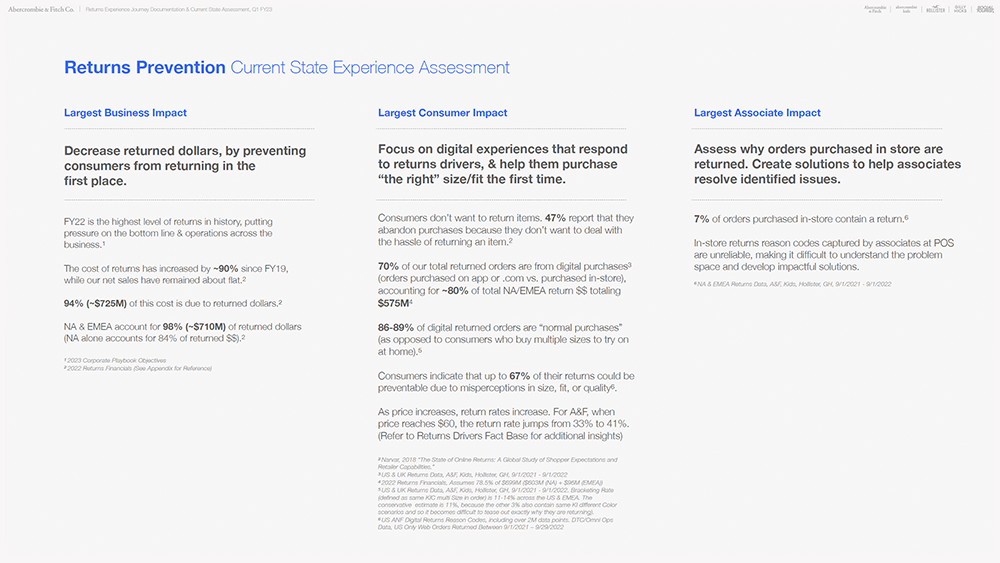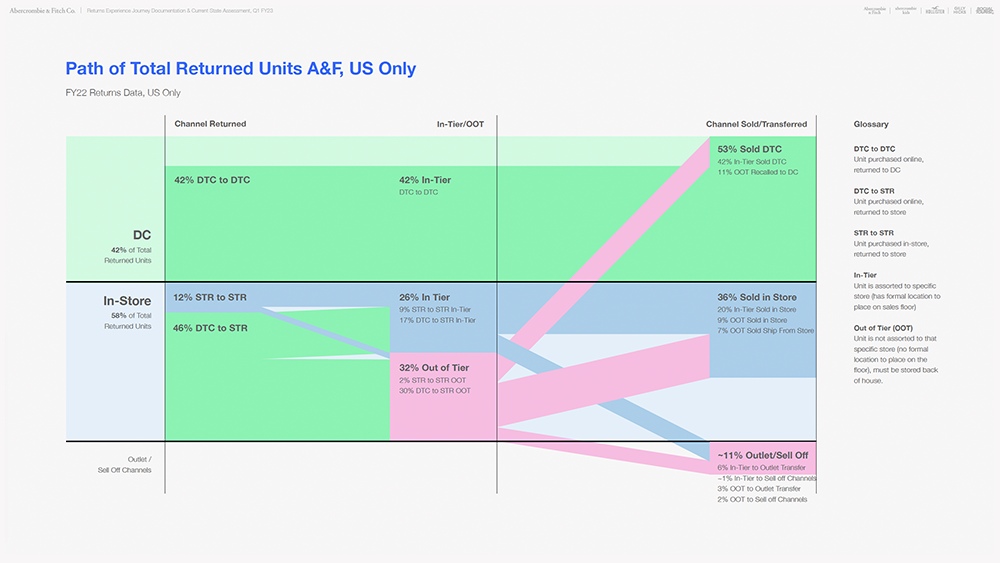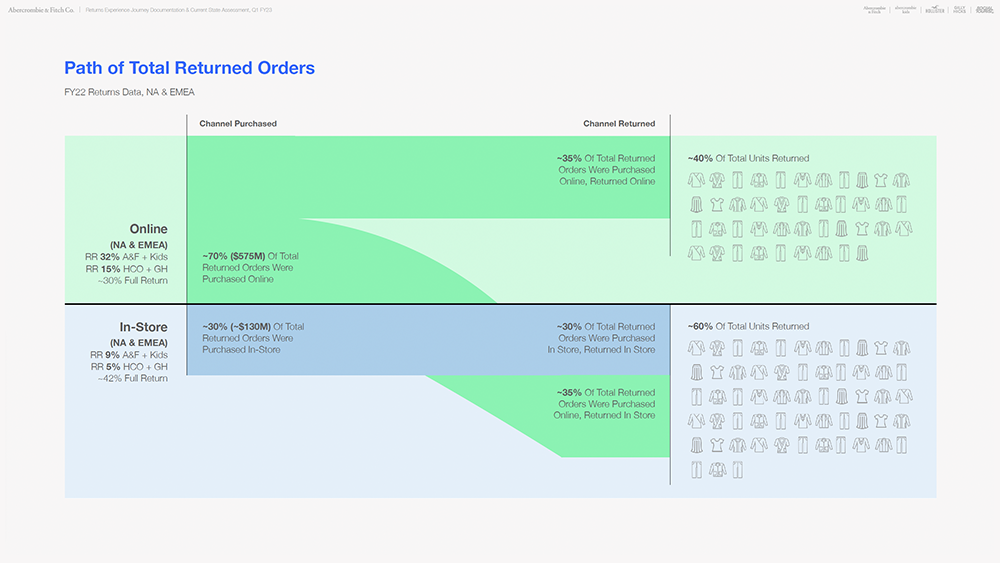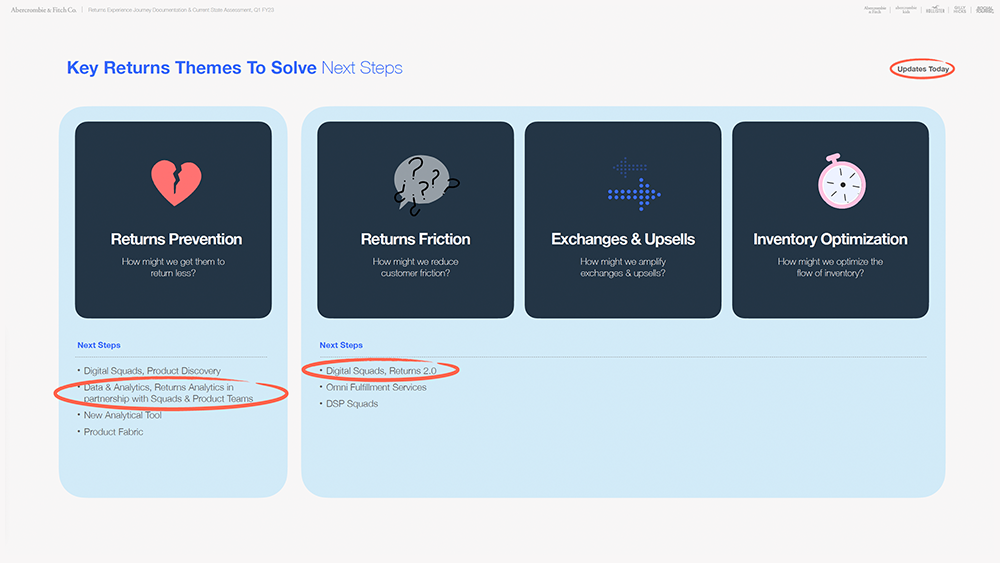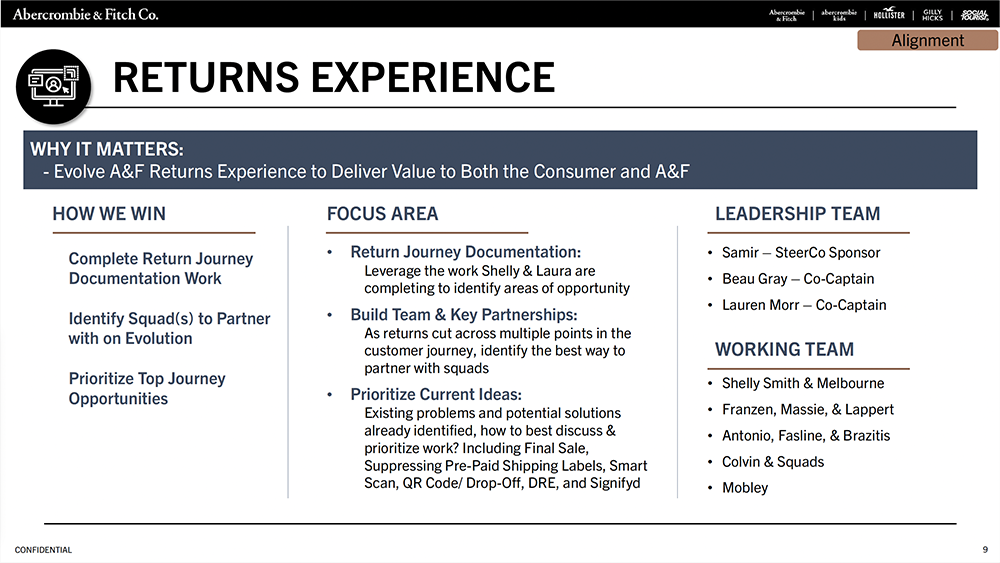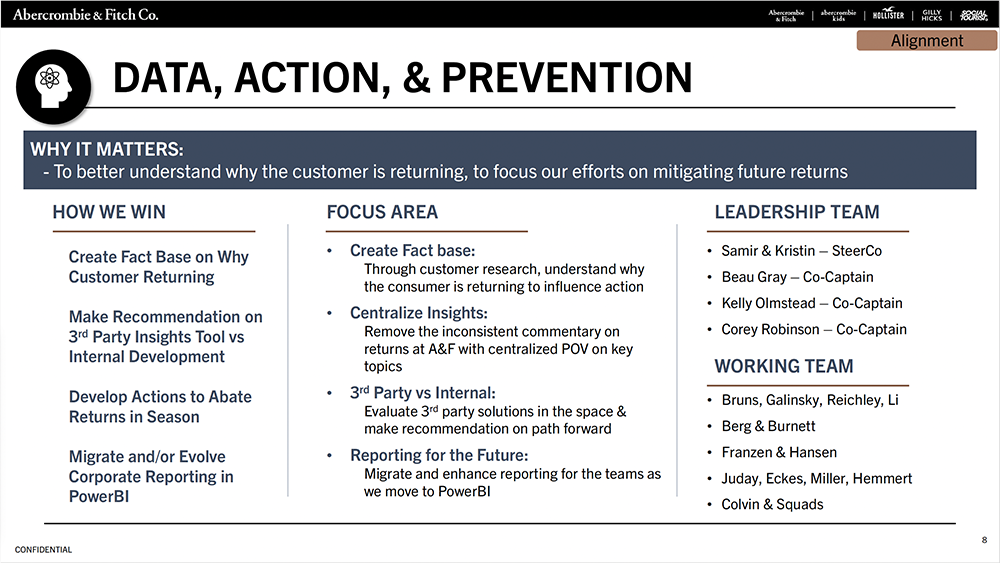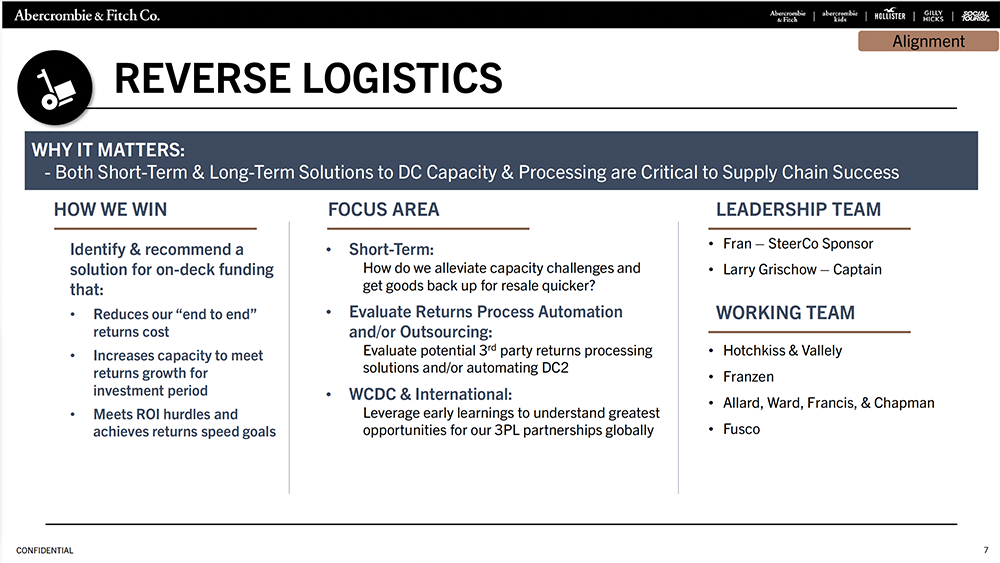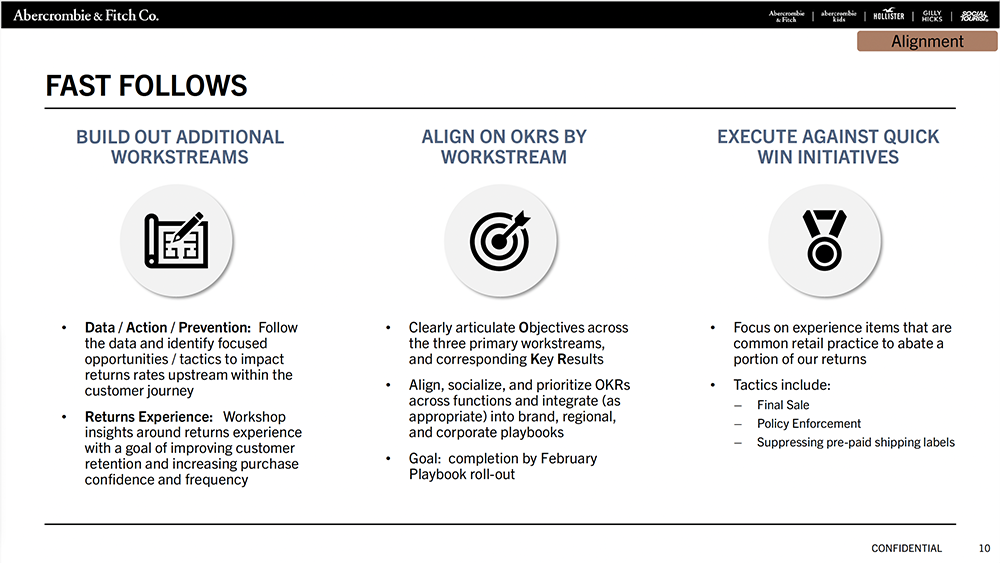A Fragmented Process with Hidden Potential
Returns had always been viewed as an operational headache, but for customers, they were often a dealbreaker. Frustrations stemmed from unclear product information, inconsistent policies across regions, and lack of transparency in return tracking. Associates, too, felt the strain, navigating complex workflows with limited tools.
Internally, we lacked alignment on the returns process, leaving teams siloed and solutions disjointed. Despite these challenges, returns also represented a unique opportunity: a chance to improve efficiency, enhance customer satisfaction, and reduce costly returns caused by size and fit issues. Leadership recognized that solving these problems could transform returns into a loyalty-building moment.
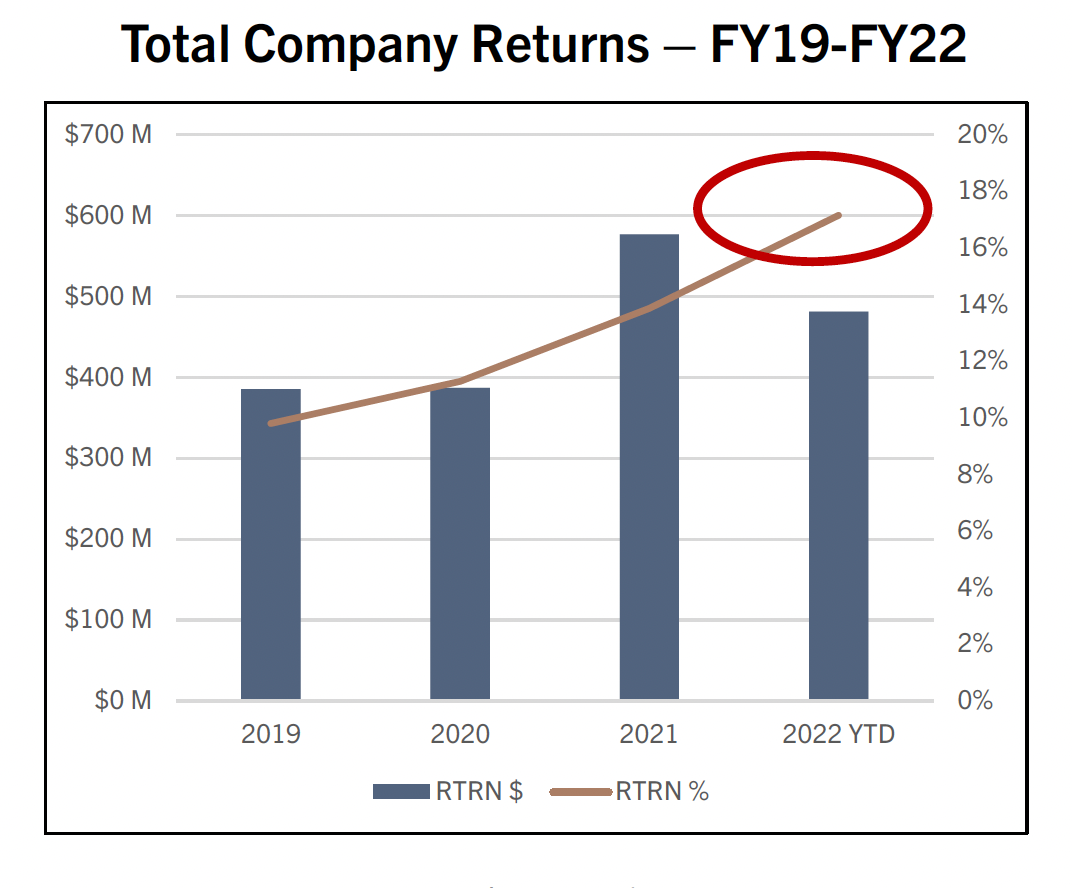
By Q3, A&F was on pace to see returns reach a historic level, but we didn't understand what drove the customer return experience or the long term impact to loyalty.
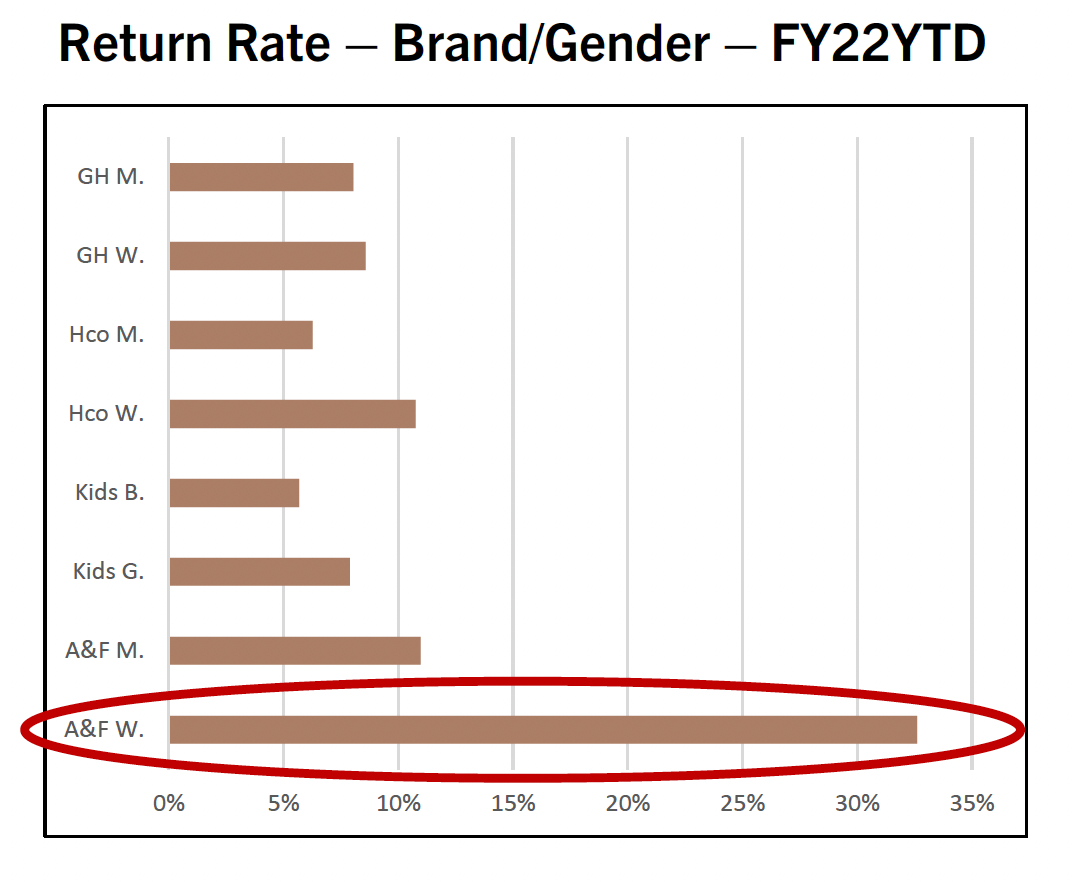
Return data showed us that the A&F Women's category was experiencing the most returns, but not why they were returning?
